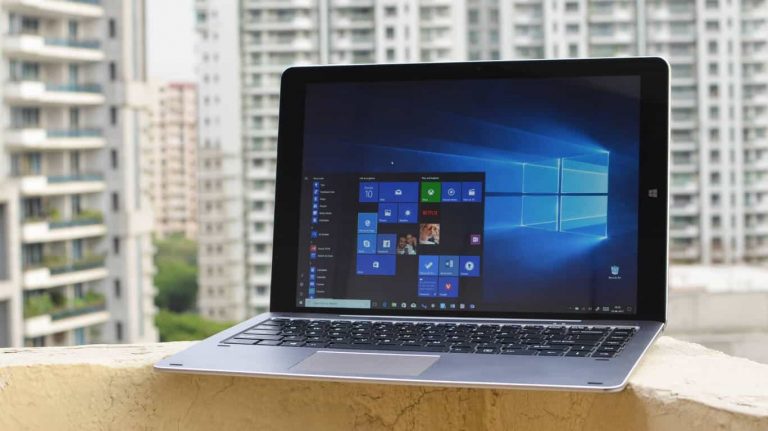Established in 2004, Chuwi is very popular on online retailers in China, and the company is now trying to gain ground in other markets. The Shenzhen-based OEM has a pretty neat lineup of affordable Windows laptops and 2-in-1 tablets.
Chuwi is a global partner for Intel and Microsoft, which inspires a little confidence in this relatively unknown brand. I recently spent some time with the Chuwi Hi13, the Windows 10 2-in-1 device, and here’s my review of the same.
Chuwi Hi13 Specifications
- Display: 13.5-inch IPS (3000 x 2000) | 10-point capacitive multi-touch
- Processor: 7th Generation ‘Apollo Lake’ Intel Celeron N3450 | 1.1GHz with burst to 2.2GHz | Intel 500 GPU
- Internal storage: 64GB; expandable with microSD card
- RAM: 4GB LPDDR3
- Camera: 2MP front camera | 5MP rear camera
- Battery: 10,000 mAh
- Ports: 1 x USB 2.0 | 1 x USB 3.0 | 1 x USB Type-C | 1 x micro USB | 1 x micro HDMI
- Weight: 1.1 kg (tablet) | 0.89 kg (keyboard)
Design
The Chuwi Hi13 is mostly a metal alloy machine. It’s a solid machine, and built very nicely. There are no creaks and neither does the hardware feel cheap in any way. With last few devices, Chuwi has perfected the art of dishing out well-built hardware without charging a premium on the cost.
The dull silver finish is smooth and subtle, and the exterior doesn’t pick up any smudges or fingerprints. It’s not fancy or eye-catching by any measure, but has a functional, utilitarian design.
The one oddity that the Hi13 has is that the tablet is significantly heavier than the keyboard base. The internals and battery are all housed in the tablet and the keyboard is just a dumb base, and hence the former is quite heavy. Used in the laptop mode, the top-heavy design is awkward and it feels as a slight nudge on the display would knock off the laptop.

You can also reverse the tablet and attach it to the keyboard for presentation mode or for the tablet to lay flat on the keyboard, especially for inking.
Display

Of course the digitizer layer and the display lamination aren’t the best, but you’ll want to overlook that (and most people don’t notice it anyway).
Chuwi claims that the display on the Hi13 delivers a 100% sRGB color gamut, which is not even the case with more premium devices including the Surface line-up.
Hardware
Powered by the 7th Generation Intel Celeron processor, the Chuwi Hi13 aims low and delivers nicely. It’s better than a device powered by Intel Atom of course. The Intel Celeron N3450 processor chugs along nicely for most daily tasks, much thanks to the optimizations that Microsoft has brought to Windows 10, especially for low-end devices.
Since there’s only a Celeron processor, the Hi13 is a fan-less device, yet it does a good job at keeping the heat in check. The tablet never gets uncomfortably hot, and since there’s no battery in the keyboard, it doesn’t get warm at all.
However, that exceptionally high resolution of the display requires much more graphics power, and you’ll see some lags here and there. It’s not ideal, but a trade-off for that display on a budget device.
Like most Chuwi devices, the Hi13 packs in eMMC storage. While it is faster than a traditional hard disk drive, it doesn’t match up to that of an SSD. It’s a good economy versus feature settlement though. Of course, there’s a microSD card slot for you to expand the storage if required.
Chuwi is quite generous with ports, really. There are two traditional USB Type-A ports – one USB 3.0 and one USB 2.0 – on the keyboard base, on either side. which makes sense due to the size. On the tablet, there’s a USB Type-C port, a micro HDMI port, microSD card slot, and a micro USB port.
Keyboard and Pen

The keyboard is pretty good actually. It’s nicely built, and the black chiclet keys allow a good amount of travel. The click-click sound and the nice bounce makes for a very satisfying typing experience.
It’s not backlit, but that shouldn’t be a showstopper for a budget 2-in-1 device.
The plastic trackpad is just about okay. The color accent looks good, and the cursor movement and accuracy is good enough. The clicking though is inconsistent. Many a times a click is not registered, and it’s annoying. This is a usual complaint with Chuwi though thankfully, the trackpad on their latest Chuwi LapBook 12.3 is a great improvement (Review coming up soon!).

Battery Life
Because of the high-resolution and bright display, of course, the power draw is higher. You’ll get five hours of battery life, but you can turn down the brightness a little to extend it for about 90 more minutes. It’s not the best amongst other Intel Celeron devices, and like the processing power, it’s a hit the device takes for that display.
Big props to Chuwi for allowing the Hi13 to be charged via USB Type-C. It’s fast, and convenient.
Summary

On its own merit and at its price, it’s an impressive 2-in-1 device. There’s the stunning display and a solid build quality with good looks, and there’s the occasional performance hit and the top-heavy, uneven design. Overall though, it’s a pretty good package and offers a good enough Windows 10 experience, including inking and multi-touch, on a budget.




